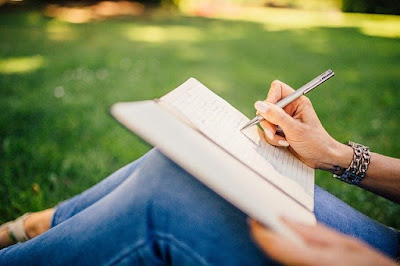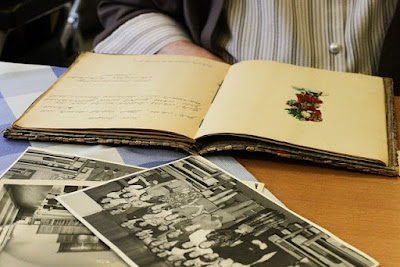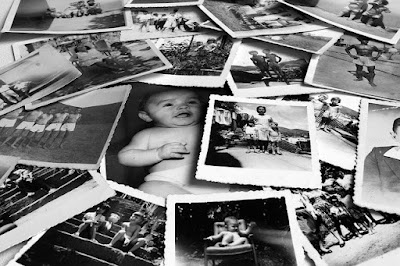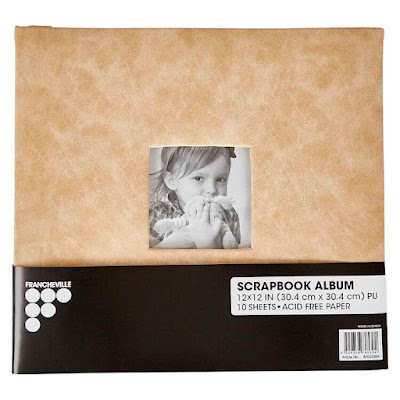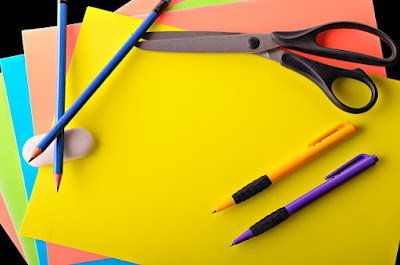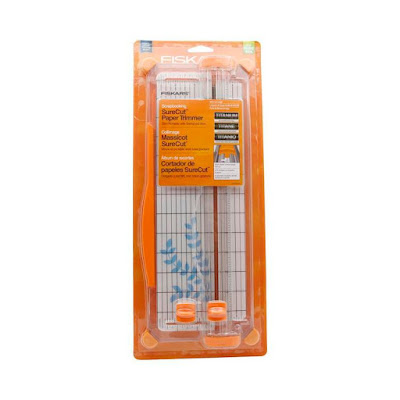Would you like to put together a scrapbook of your childhood memories but not sure what to write about. In this article I provide you with more than 85 journaling prompts that you can use as starters to get you writing about your treasured memories of growing up. Don't let anxiety about what to journal and how to journal hold you back from starting your scrapbook of childhood memories today.
Scrapbooking your childhood memories into a memory album can be one of the most rewarding scrapbook projects you might ever undertake. There is a little bit of the child still left in all of us and scrapbooking about your life growing up will bring you close to that child who still resides within. Plus you will preserving those precious memories of your life story for future generations to enjoy and wonder about.
If you are new to scrapbooking or would like some tips on scrapbooking childhood memories into a memory book or album then consider taking a look at my earlier scrapbooking article in which I provide an overview of how to get started scrapbooking your childhood memories
Tips for Journaling Childhood Memories in a Scrapbook
- You don't have to be a writer to journal
- Give yourself freedom to write whatever comes to mind. Edit later
- Trust that others will be interested in knowing about your early experiences
- Keep your stories in the one place for easy access as you write them down
- Remember the basics: when, where, what, who, why and how
- Include your feelings about the event or people not just what happened and when. Let others know what you felt about what was happening.
- Include the everday stories not just main events eg daily routine
- Write the longer version of your story first then cut it down to include in your scrapbook journaling blocks. The stories of your early life can have more than one use eg in a memory journal or part of a written account of your life. Who knows even a book?
How to Use the Journaling Prompts
Start With One or Two Journaling PromptsTo get started just pick a couple of prompts from the list and work on writing about these. Some people like to start with the photo as the memory jogger and others write the journal note first. With a bit of practice you will soon work out what works best for you. And who knows what forgotten memories might surface?
Use a Notebook, Computer or Google Docs
I suggest that you start a notebook if you are writing by hand as it will help keep all your stories together so they don't get lost. If journaling on the computer make sure you back up your stories once you start recording them. If you have a Google account you might consider using Google Docs for easy online access across devices and to other services like Google Photos and Google Drive.
Group Similar Stories Together and Envisage the Journaling on Your Layout
Grouping stories about people, places or activities can be helpful in writing about your early life. For instance if you were to write about the places you lived growing up think about how your might group these in your scrapbook memory book layout. Would you need a page for each story about a place or would you envisage putting all your photos on a two page spread and journaling around these?
85+ Journaling Prompts of Childhood Memories - Mega List of Journaling Starters for Scrapbooking
Make sure you check out my mega list of journaling prompts for scrapbooking your childhood memories set out below. There are more than 80 journal prompts to help you access childhood memories and get you journaling. Over time I will be adding more to the list so check back often for updates.- Your earliest memory (what makes it still so vivid?)
- Family members - immediate (who are they? your relationship growing up, who were you close to?)
- Family members - extended (who were you close to? grandparents, cousins, uncles and aunts)
- Best friend (who? still friends now?)
- Friends
- Memorable People
- Pets
- Cities, towns you lived in
- Your house or houses (what do you remember about the rooms, temperature, light quality, near tothe smell, sunny, dark, warm, cold?)
- Your room
- Your personality (character traits eg shy, precocious, studious, bossy, a star, different etc)
- Looks (what did you look like? eg tall/short for your age, wore thick specs, gangly, spotty)
- Bullying (what did you get teased for and why?)
- Holidays and vacations (where did you go? what did you do? who did you meet? who was with you?)
- Memorable places (smells, visual memories etc)
- Family traditions (what were they? and why?)
- Family secrets (what and why?)
- Neighbours
- Schools (which ones? for how long?)
- What you liked and didn't like about school
- Teachers (was there a teacher who was influential)
- Role models (who and why?)
- Visitors
- Achievements
- Awards and Certificates
- Competitions won
- First dance
- First crush
- First date
- First kiss
- First times (eg owned a watch, on an aeroplane, saw snow, went to school by yourself etc)
- Embarassing moments growing up (what happened, why was it embarassing? what did you do next?)
- After school job
- Favorite sayings and expressions
- Favorite hobbies
- Favorite pastimes
- Favorite musical instrument (what did you learn to play?)
- Favorite gift / gifts (what and why?)
- Chores
- Morning routine
- Pocket money (how much? what did you spend it on?)
- Clubs
- Service Groups
- Church
- Sports
- Playmates (who did you play with? siblings? friends? neighbours?)
- Times when you were sick
- Time when others were sick
- Favorite foods (what was special about these?)
- Least favorite foods (what didn't you like)
- Favorite foods to cook
- Favorite time of the day (what happened then? why?)
- Favorite thing to do
- Favorite games (who won and why?)
- Favorite school subjects
- Favorite arts and crafts
- Favorite songs
- Favorite books
- Favorite movie or movies
- Favorite cartoon and cartoon character
- Favorite toys
- Favorite collections (what did you collect and why?)
- Favorite day of the week (don't forget to say why)
- Favorite belongings (what these things important to you?)
- Favorite hideaway (eg treehouse, hut, in the bushes)
- Favorite places
- Favorite clothes (what did you like, not like)
- Haircuts and styles
- Dressing up
- Family outings and activites (where, who with, why)
- Weekends (how did you spend these? what was happening around you?)
- School trips
- Birthday parties (when and who?)
- Running away (where did you go and what happened?)
- Failure (what happened? what did you learn? how did it help you?)
- Bad habits (what were they? did you ever grow out of these?)
- Things you did even though you knew it was wrong (what happened?)
- Liked doing the most
- Disliked doing the most
- Things you made (eg knitting, sewing, crafts etc)
- Most embarassing moments
- Things you were afraid of (eg spiders, mice, dogs, birds etc)
- An event or incident that really scared you
- Greatest life lesson
- One thing you learned in school that stuck
- What would you differently if there was a do over
#journalingprompts #scrapbooking #childhoodmemories
I hope you enjoyed this list of 85+ journaling prompts to spark childhood memories that you can use to accompany photos in your childhood memories scrapbook. If you would like to print the list of journal prompts for scrapbooking childhood memories as a PDF for future reference just click on the print button below or on the print icon in the bank of floating buttons on the right-hand side (PC) and bottom (mobile).
#scrapbook #journalprompts #childhoodmemories
Related Articles
How to Start Scrapbooking your Childhood Memories in a Memory AlbumBest Scrapbooking Page Titles for Family Layouts
Scrapbook Friendship Using Friends Quotes, Friends Page Titles and Journaling Ideas
Best Sister Quotes for Scrapbooking Layouts and Memory Journals


